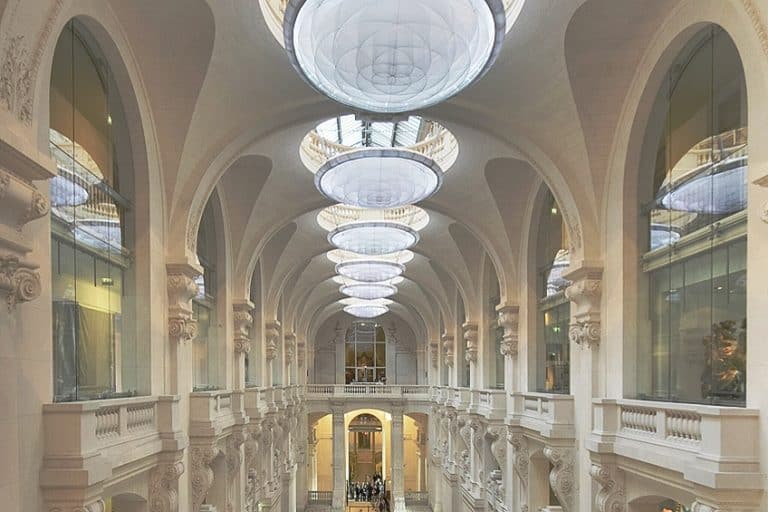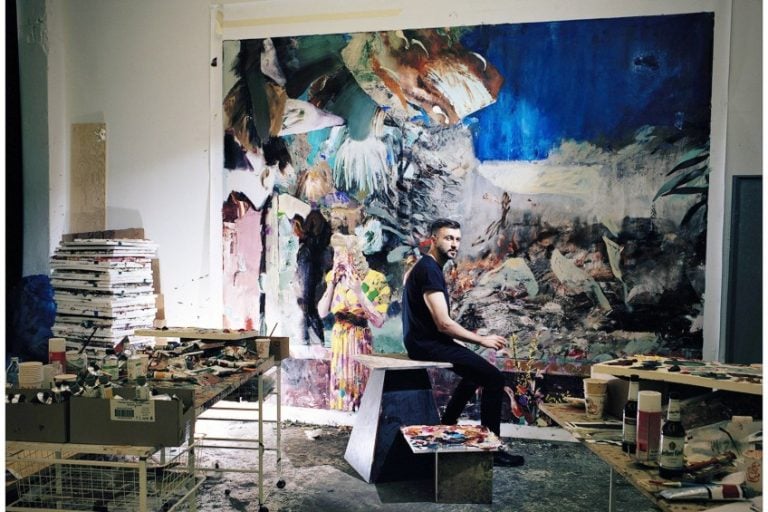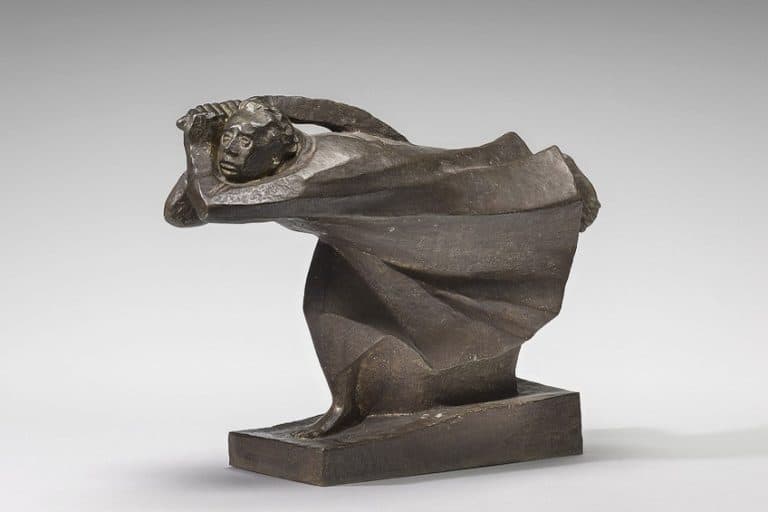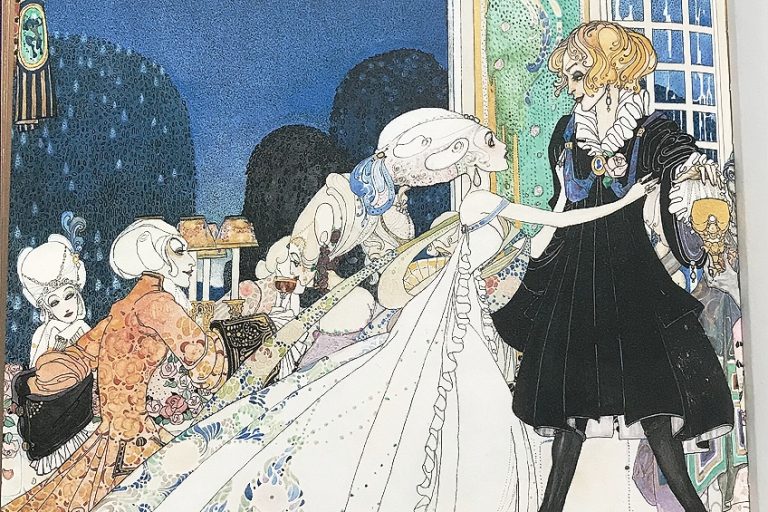Abstract Expressionism Artists – 12 Masters of Expressive Painting
Known as a post-World War Two art movement, Abstract Expressionism was the first exclusively American genre of painting to reach worldwide influence. Forming in the 1940s in New York City, Abstract Expressionism artists helped turn the city into the new Western center of the art world, which effectively went on to replace Paris. Due to this dramatic shift in location, many artists began experimenting with Abstract Expressionist paintings, leading to an influx of paintings being produced during this movement.
What Was the Abstract Expressionism Art Movement?
Developing throughout the 1940s and 1950s in New York, Abstract Expressionism encouraged artists to focus on visualizing their subconscious thoughts. However, the introduction of the term was first used in Germany in 1919 to describe artworks that belonged to the German Expressionism movement.
Abstract Expressionism was only later introduced in America in 1929, when Albert Barr, who was the then-director of the Museum of Modern Arts, attempted to explain the paintings produced by Wassily Kandinsky.
After the war ended, the political volatility that arose in Europe during the 1930s led several important Surrealist artists to move to New York. Their arrival in America went on to heavily influence many artists, as the Surrealists introduced a new way of thinking through their depictions of the unconscious mind in their artworks. This led to a heightened interest in myth and archetypal symbols, with these concepts shaping American artists’ grasp of painting as a battle between individualism and the turmoil of the subconscious.
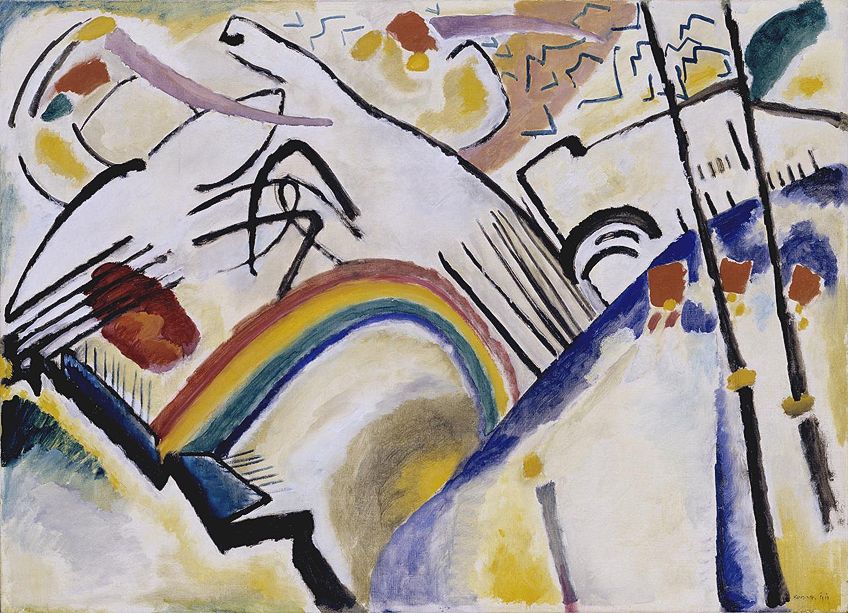
The emergence of Abstract Expressionism was brought on by a group of influential artists at the time when America was struggling financially after the devastation caused by the Second World War. With the country feeling an overwhelming sense of cultural isolation, Abstract Expressionism artists saw this as an opportunity to introduce the first bona fide American avant-garde art genre. In doing so, artists channeled and defended the American spirit and freedom by creating artworks that were daring, courageous, and full of emotion and passion.
Most of the Abstract Expressionism artists were quickly impacted by the era’s leftist political views and began appreciating art that was based on personal experience.
The artworks that were produced during this movement were celebrated for being unquestionably American in spirit through their immense scale, sentimental mood, and expression of strong individual freedom. As the movement progressed, few artists maintained their previous extreme political views but continued to embrace the attitude of the unconventional artists driving Abstract Expressionism forward.
Although the movement has been depicted throughout history as heavily dominated by men, several incredibly important female artists emerged in New York and San Francisco during its peak. Despite only receiving their long-overdue recognition recently, these female artists have been credited as integral members of the movement.

Characteristics of the Abstract Expressionism Movement
The term “Abstract Expressionism” was never seen as a perfect label to precisely describe the art movement. This was because the name was meant to include the works of painters who loaded their canvases with areas of color and abstracted shapes, as well as those who bombarded their canvases with a powerful form of gestural expressionism.
Despite this, Abstract Expressionism still went on to become the most popular term for this group of artists who clearly had much in common.
Abstract Expressionism was characteristically denoted by the great dedication to self-expression that artists communicated via their paintings. Emotions were able to be evoked through gestural strokes and marks that were spontaneous and colorful in nature. These experimental techniques led Abstract Expressionism artists to the development of action painting and color field painting, as great areas of bright and pure colors were customarily used.
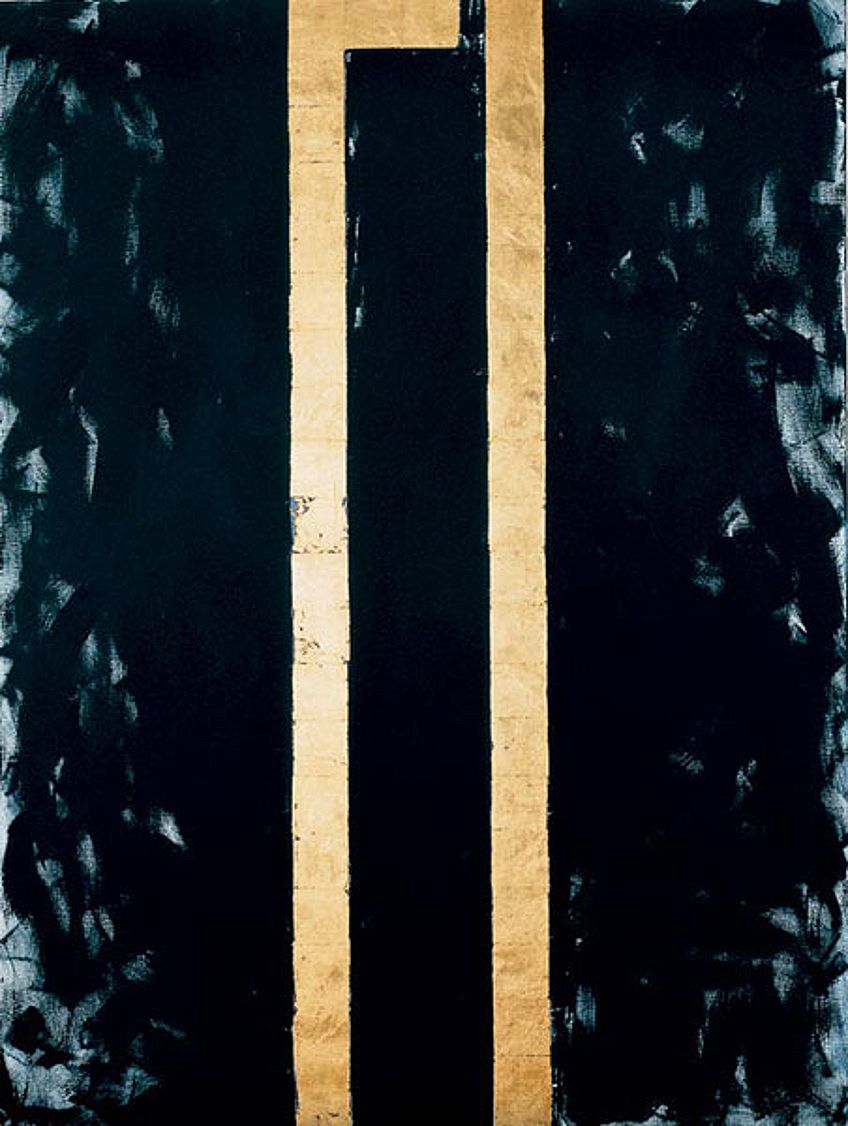
The methods of action painting and color field painting were two distinct characteristics used by artists practicing within the Abstract Expressionism movement. Action painting was generally done through impulsive and gestural brushstrokes, while color field painting was completed by artists who worked with a vast area that was made up of a single color. While either method was used, some artists went so far as to sporadically drip colors onto a canvas and deem the finished work as art worthy of being included in Abstract Expressionism.
Molded by the legacy of Surrealism, Abstract Expressionism was borne out of intense emotion and universal issues.
This movement rendered a new style that was in keeping with the post-war mood of fear, apprehension, and trauma that existed in America during the 1940s and 1950s. In an age of artistic censorship, Abstract Expressionism became popular due to its abstract form. This was because these paintings were either seen as apolitical and therefore safe during such a time, or were viewed as a political message mostly reserved for insiders only.

Our Top Abstract Expressionist Artists
Today, many contemporary artists still explore the techniques and skills associated with the first generation of Abstract Expressionism. The artists who formed the movement really integrated this unusual aesthetic idea into artistic society, which has encouraged others to experiment with it more than half a century later. Due to this, several prominent artists worked within this movement and produced iconic artworks. While no list will ever be truly adequate, we will be discussing our top 12 Abstract Expressionism artists below.
Wassily Kandinsky (1866-1944)
| Lifespan | 1866 – 1944 |
| Nationality | Russian |
| Art Movements | Expressionism and Abstract Art |
| Most Famous Artworks | Der Blaue Reiter (The Blue Rider) (1903) Untitled (First Abstract Watercolor) (1910) On White II (1923) |
Russian artist Wassily Kandinsky is perhaps one of the most well-known artists in history and is often considered to be one of the first Abstract Expressionists to emerge. As one of the pioneers of this modern movement, Kandinsky played around with the expressive connection between color and form.
This enabled him to produce an aesthetic experience that involved the senses of sight and sound, as well as the emotions of the audience.
Despite Kandinsky’s elevated understanding of how art could be manipulated, he only began painting at the age of 30. Prior to this, he was a university professor who studied law and economics. After beginning his life drawings, he believed that art should be separated from one’s reflections and opinions of the outside world. Kandinsky worked to detach color from any external references in his paintings. Through abstracting objects and themes past the point of recognition, he was able to offer a profound and mystical expression of something.

Motivated to create art that expressed a global sense of spirituality, Kandinsky invented a type of pictorial language that only vaguely correlated to the outside world. In doing so, his works expressed volumes about his internal experience. An example of this can be seen in his paintings that imitate music, as he viewed song to be one of the most exceptional forms of non-objective art to ever exist.
Through embodying the techniques of music, Kandinsky was able to produce paintings that implied sounds and emotions through a harmony of feelings.
As his career spanned many years, Kandinsky’s works and ideas inspired many generations of artists. From his students at the Bauhaus to the Abstract Expressionism artists that emerged after World War Two, several people felt a deep connection to the spirituality he was able to convey in his abstracted works. As both a teacher and an artist, Kandinsky viewed himself as a visionary whose mission was to share his thoughts with the art world for the development and enhancement of society.
Janet Sobel (1893-1968)
| Lifespan | 1893 – 1968 |
| Nationality | Ukrainian and American |
| Art Movements | Abstract Expressionism |
| Most Famous Artworks | Pro and Contra (1941) Milky Way (1945) Untitled (1946) |
Iconic Ukrainian artist Janet Sobel began her career as an Abstract Expressionist painter at the age of 45 years old. Despite her, somewhat brief career, the type of paintings she produced went on to be seen as incredibly influential, as she is credited with the invention of the “drip painting” technique that inspired fellow artist Jackson Pollock. Additionally, Sobel made a huge impact on the art critic Clement Greenberg, who described her artworks as the first “all-over” paintings he had ever seen.
Her status as a female painter during the early 20th century led to her talent and artworks being largely ignored throughout her lifetime.
Her paintings were only recognized by both Pollock and Greenberg when they were exhibited by Peggy Guggenheim at her Art of This Century Gallery show, which took place in New York in 1944. After viewing her work, Pollock stated that he was so intrigued by the curious splash techniques that Sobel demonstrated that he tried it for himself, which led to him becoming a very famous artist.
Her career proved to be quite controversial, as female artists creating such prominent artworks were still quite unusual at the time. In spite of her growing status, Sobel was primarily seen as a housewife even once she had begun her profession. Greenberg stated that while she could easily be seen as a forerunner of Abstract Impressionism, her paintings were not worthy of the same credit given to other Abstract Expressionist artists.
This notion was continually emphasized by critics comparing her drip paintings to Pollock’s, as Sobel’s artworks came off as more primitive and cruder in nature. Due to this, the majority of her paintings were overlooked throughout her career, which led to her essentially being left out of the art historical discourse.
However, as time has gone on, Sobel’s paintings have slowly started to be looked at in a more professional light, demonstrating her status as a unique and self-taught artist in her own right.
Bradley Walker Tomlin (1899-1953)
| Lifespan | 1899 – 1953 |
| Nationality | American |
| Art Movements | Abstract Expressionism and Abstract Art |
| Most Famous Artworks | Tension by Moonlight (1948) Number 20 (1949) Number 9: In Praise of Gertrude Stein (1950) |
Another overlooked Abstract Expressionist painter was American artist Bradley Walker Tomlin, who practiced during the first generation of Abstract Expressionism. Tomlin was also part of the group of New York School Abstract Expressionist artists and produced paintings that contained a mournful tone to post-World War Two abstract art. Throughout his career as an artist, Tomlin worked in various teaching positions, with his most notable job being at Sarah Lawrence College from 1932 until 1941.
By mixing meaningful action painting techniques with his structured goal of perfection, Tomlin’s artworks were known for their superb originality and great intensity of feelings.
During his early career, Tomlin experimented with Cubist-inspired still life’s until he was greatly inspired by the artworks produced by fellow Abstract Expressionist Adolph Gottlieb in the mid-1940s. His artistic style took a sudden and brief turn towards the semiautomatic method of painting, as it best represented Tomlin’s then-interest in Japanese calligraphy.
However, this digression in style was incredibly short-lived, as the majority of Tomlin’s paintings that are well-known today demonstrate typographic shapes that seem to be floating over a controlled canvas. This iconic style of Tomlin’s revealed his interest in an aesthetically pleasing but still controlled type of freedom that could be seen throughout all of his later artworks.
Unfortunately, Tomlin’s career was very short-lived as he suffered a heart attack at the age of 53, after returning home from a party at Jackson Pollock’s house. As time has gone on, his exclusion within Abstract Expressionism has slowly begun to be corrected. This has most notably been seen in a solo retrospective exhibition of his lifetime works that was put on in 2016 at the Samuel Dorsky Museum of Art in New York.
Mark Rothko (1903-1970)
| Lifespan | 1903 – 1970 |
| Nationality | American |
| Art Movements | Abstract Expressionism and Color Field Painting |
| Most Famous Artworks | No. 6 (Violet, Green, Red) (1951) No. 1 (Royal Red and Blue) (1954) Orange and Yellow (1956) |
One of the most notable Expressionist artists was said to be American painter Mark Rothko, who was best known for his color field paintings during his career. Before he landed on his signature style of color field painting in the early 1950s, Rothko experimented with a variety of art styles.
Rothko was also considered to be a prominent figure among the New York School painters, with his earlier paintings demonstrating his ability to seamlessly blend Expressionism and Surrealism within his artworks.
Rothko’s artistic style was very different from his fellow Abstract Expressionist artists, as he worked to diffuse paint over his canvases as opposed to making use of gestural brushstrokes that were characteristic of the movement. This led to the creation of his iconic color field paintings that consisted of large shapes of pure and unadulterated color against a brightly contrasted background. The goal of these somewhat hazy-colored squares and forms was to evoke a variety of emotions and to immerse viewers in a powerful and sensory atmosphere.
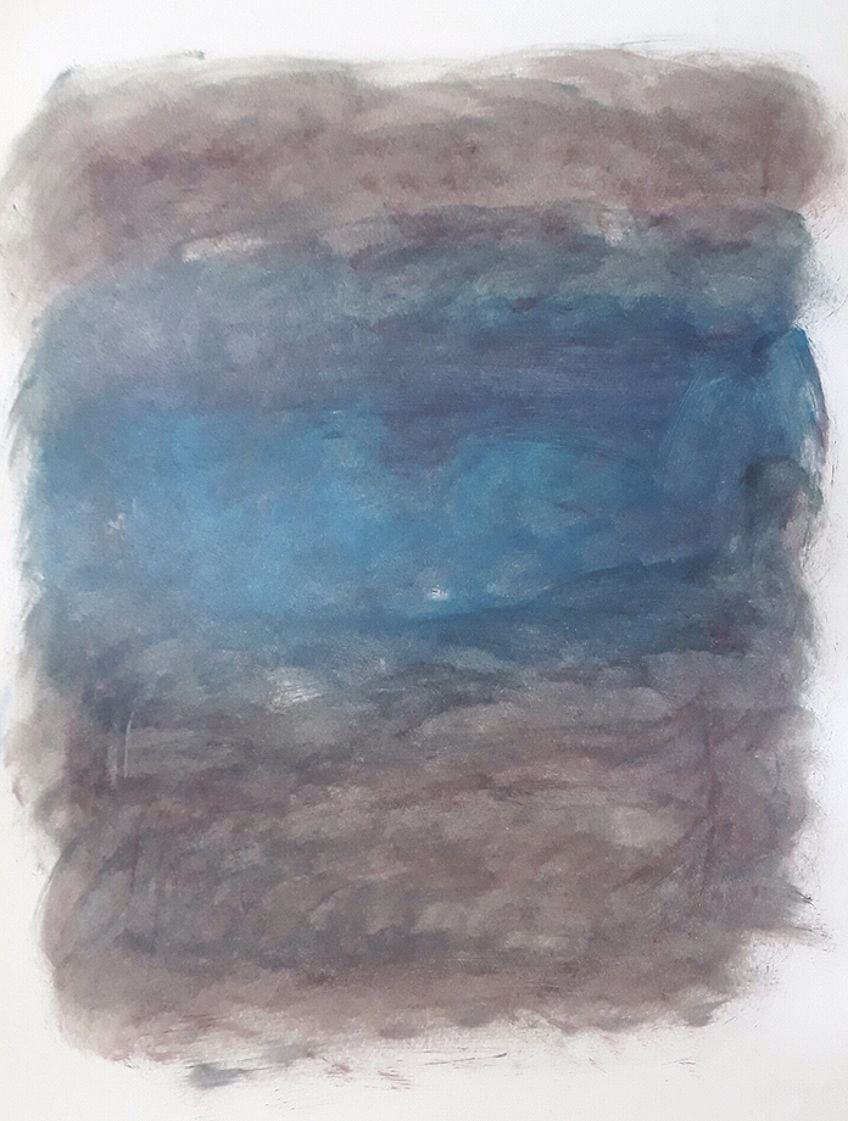
The title of the majority of Rothko’s color field paintings exemplified his influence within Abstract Expressionism. As each of his paintings was titled by different color variations, their names ultimately represented the chromatic abstractions that Rothko was attempting to create. According to Rothko’s style, he viewed color as the most powerful tool with which to communicate various emotions and feelings.
Thus, his blocks of color were meant to foster a relationship with audiences in order to provide a contemplative space to view the work.
Throughout his career, Rothko favored the straightforward expression of complex thoughts through blocks of color. Rothko maintained the artistic freedom that was present in his artworks and despite his ideas clashing with the traditional art establishment, his reputation as an influential artist grew. Sometimes feeling that the art market was too critical, Rothko frequently refused to sell and exhibit his artworks. Sadly, Rothko committed suicide in 1970 and it was only after this that his artworks began to steadily increase in value.
Arshile Gorky (1904-1948)
| Lifespan | 1904 – 1948 |
| Nationality | Armenian-American |
| Art Movements | Abstract Expressionism |
| Most Famous Artworks | Garden in Sochi (1943) The Leaf of the Artichoke Is an Owl (1944) Agony (1947) |
Armenian artist Arshile Gorky, born Vostanik Manoug Adoian, was an incredibly notable Abstract Expressionist painter, whose artworks demonstrated his influence and passion for the movement. Due to his persistent efforts in teaching the public about the notion of abstraction, Gorky was considered to be a chief advocate for aesthetic experimentation.
Along with fellow artists Jackson Pollock, Willem de Kooning, and Mark Rothko, Gorky has been praised as one of the most important American painters to emerge from the 20th century.
Gorky’s diverse body of work proved to be crucial in the emergence of Abstract Expressionism. Initially experimenting with Cubism and Surrealism, Gorky’s paintings demonstrated the crucial influence that the Armenian genocide had on his development as an artist. Suffering and loss became primary themes within the majority of his Abstract Expressionist paintings, as he portrayed his own personal trauma as a genocide survivor.

Additionally, Gorky portrayed his recollections of the beauty associated with his childhood in Armenia, as he used his paintings as a way to begin resolving his mostly tragic life. This was done by converting real and remembered people and objects in newly abstracted and composed environments onto his canvases. His paintings proved to be historically important, as they provided a very significant link between pre-war modern art styles in Europe and the beginning of Abstract Expressionism within American during the 1940s.
By giving his artworks titles that directly referred to specific objects and places, Gorky was able to combine objective reality and subjective feelings in his paintings. Gorky’s experimentation with Abstract Expressionism and his emphasis on colors and personal content led him to further free the forms and objects in his paintings.
This ultimately demonstrated that beauty could be found in the most tragic experiences, as Gorky’s lively and vibrant paintings became core characteristics of American Abstract Expressionism.
Clyfford Still (1904-1980)
| Lifespan | 1904 – 1980 |
| Nationality | American |
| Art Movements | Abstract Expressionism and Color Field Painting |
| Most Famous Artworks | PH-129 (1949) 1948-C (1948) 1957-D-No. 1 (1957) |
Despite not being as well-known as his fellow Expressionist artists, American painter Clyfford Still made a significant contribution to the art movement. Still is credited with laying the groundwork for Abstract Expressionism and for being the first artist to formally produce an abstracted work that was without any obvious subject matter.
Through developing a new and powerful approach to painting after World War Two, Still is widely considered to be the most talented painter coming from the Abstract Expressionism group.
At the start of the 1940s, Still practiced as a representational painter and evoked moody scenes with dark colors in the majority of his works during this time. However, by the time the mid-1940s came around, he had entered into his mature period and began to experiment with dashes of brightly colored lines and forms all over his canvases. This marked Still’s shift into both Abstract Expressionism and Color Field painting as he juxtaposed different colors and formations, which would go on to become his signature style.
Within Still’s Color Field paintings, the themes of energy and morality were expressed. These expansive fields of bright color were often compared to caves and vast crevasses that were momentarily lit up by light, as they appeared to be jagged and broken across the canvases. His mature paintings demonstrated, on a very large scale, the striking conflicts that occurred between man and nature, with this struggle becoming a common theme in the majority of his works.
Still was labeled a controversial person within the art community, which caused his reputation to dwindle and his works to rise in popularity.
This was because he completely shunned the New York art scene and went to unusual lengths to control the selling, collection, and exhibition of his paintings. Upon his death, almost 95% of his artworks were in his possession and had never been exhibited. In 2011, the Clyfford Still Museum was built in Colorado to display his some-3000 artworks that were mostly never exhibited before.
Willem de Kooning (1904-1997)
| Lifespan | 1904 – 1997 |
| Nationality | Dutch-American |
| Art Movements | Abstract Expressionism |
| Most Famous Artworks | Excavation (1950) Woman III (1951 – 1953) Interchange (1955) |
Dutch-American painter Willem de Kooning is perhaps one of the most well-known Abstract Expressionist artists to emerge from the movement. In addition to his artworks being seen as massively influential for Abstract Expressionism, de Kooning was socially and intellectually engaged with many of his fellow artists. Through using broad brushstrokes and light colors, de Kooning is considered to be one of the most important “action painters” of the movement, as he sought true authenticity in all the artworks he created.
Celebrated for his energetic and gestural style, de Kooning’s painting characterized the techniques celebrated by Abstract Expressionist artists.
What set his work apart from his contemporaries was that de Kooning never fully abandoned portraying the human form. This was seen through his alternation between abstract and figurative art, as he went on to fuse key elements of Cubism, Surrealism, and Expressionism within his works. After forming his distinct style, de Kooning continued to paint mostly female figures for the rest of his career.
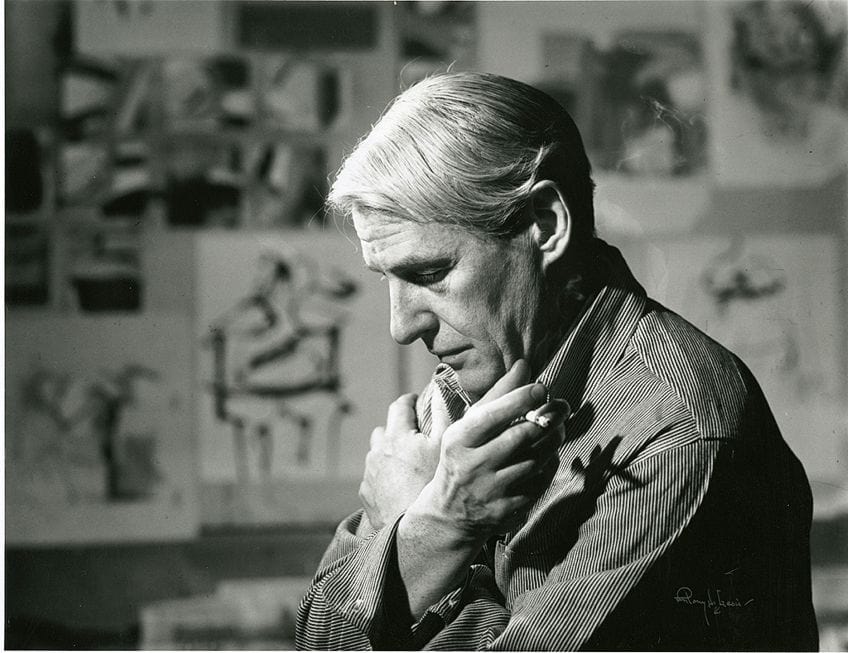
As he refused to make any distinction between artistic categories in his paintings, de Kooning insisted that the real subject matter was found between the backgrounds and the figures. De Kooning’s unending journey to find modern forms and subjects made his artistic production more diverse than most of his colleagues at the time. He was also known to rework his canvases and leave them with a sense of lively incompletion, which gave his paintings the impression that they were in the process of creating their own definition and meaning.
De Kooning’s artworks fully embodied the definition of Action Painting, as his work was actually made up of the encounter that occurred between himself and his materials.
After applying paint to a canvas, de Kooning would deliberately remove, add, and scrape paint until he uncovered the image he wanted. Thus, his paintings represented a true excavation of his mind in the moment of creation. In 1987, de Kooning was diagnosed with Alzheimer’s disease, which actually went on to increase his productivity towards the end of his career.
Lee Krasner (1908-1984)
| Lifespan | 1908 – 1984 |
| Nationality | American |
| Art Movements | Abstract Expressionism |
| Most Famous Artworks | Milkweed (1955) Thaw (1957) Cool White (1959) |
One of the few female artists who worked in the male-dominated art world was Lee Krasner, who went on to become a significant Abstract Expressionist painter in her own right. Seen as an essential intervening figure within abstraction, Krasner was inspired by Piet Mondrian’s iconic “grid” and went on to link early 20th-century art with the new ideas that were circulating post-war America.
Additionally, Krasner helped to develop the “all-over” painting technique, which went on to influence Jackson Pollock’s infamous drip paintings.
Krasner was an incredibly ambitious painter and was directly involved in the fusion of abstract form and psychological content, which signified the beginning of Abstract Expressionism in America. Her remarkable versatility and talent, along with her intense training in art theory and learned skills, allowed Krasner to continually revise her style throughout her career. This enabled her to distance herself from the rigid works of other Expressionist artists, as she worked to express herself more fully and freely.
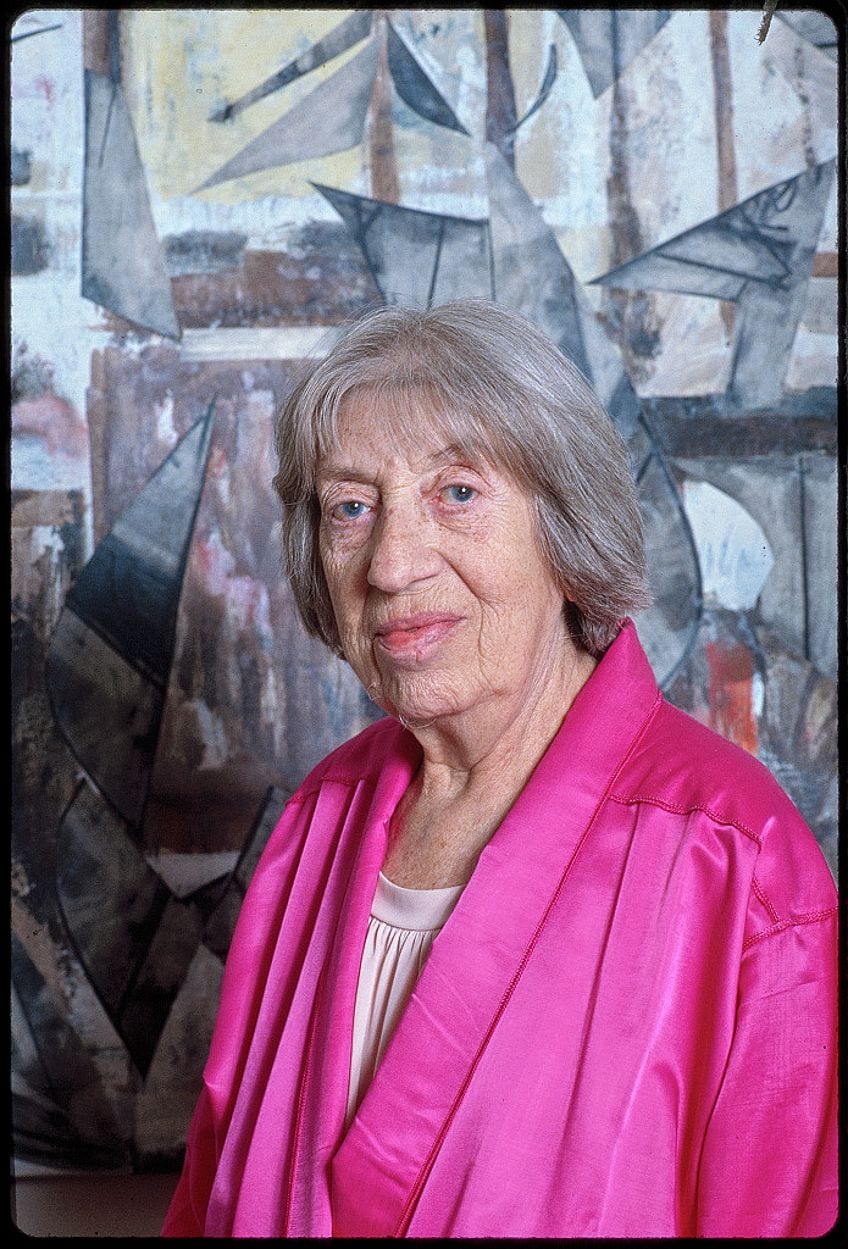
Seen as a voice for the avant-garde, Krasner prioritized individuality over momentary trends. Her unique approach to painting helped to define the Abstract Expressionism movement, as her bold canvases demonstrated the indicative and suggestive power of lines and gestures. Based on this, it was said that Krasner deliberately painted with a “controlled chaos” that signified her great determination for her artworks.
Krasner held herself to very high standards and often cut up and reconfigured her older works after being inspired by Henri Matisse.
Despite being a brilliant artist in her own right, Krasner’s career was frequently eclipsed by her role as Jackson Pollock’s wife. Her turbulent marriage to Pollock ended after his death, with Krasner working through her grief in a series of brightly colored canvases. As her works were only truly discovered by feminist art historians during the 1970s, just a small body of her earlier works remains as she reused the majority of her initial canvases whilst polishing her style.
Franz Kline (1910-1962)
| Lifespan | 1910 – 1962 |
| Nationality | American |
| Art Movements | Abstract Expressionism and Action Painting |
| Most Famous Artworks | Chief (1950) Painting No. 7 (1952) Painting No. 2 (1954) |
American Abstract Expressionist painter Franz Kline was renowned for his large black and white paintings that made use of abstract symbols. Painting with absolute confidence, Kline differed greatly from his contemporaries as his techniques were able to accurately capture the spirit with which he embodied the Abstract Expressionism movement.
Kline started his career as a realist artist after being given strict academic training, but his style slowly evolved into his signature abstract approach after he met fellow artist Willem de Kooning.
Famous for his black and white abstracted works, Kline’s paintings were created using large brushes and ordinary house paint. He moved through his huge canvases with such spirited motions that his compositions had distinctive energy about them. The lines and forms that Kline painted were seen as completely unrelated to any rational entity, rather, they existed in their own reality. The majority of his works were compared to a number of things, such as New York’s cityscape, his boyhood home in Pennsylvania, and Japanese calligraphy.
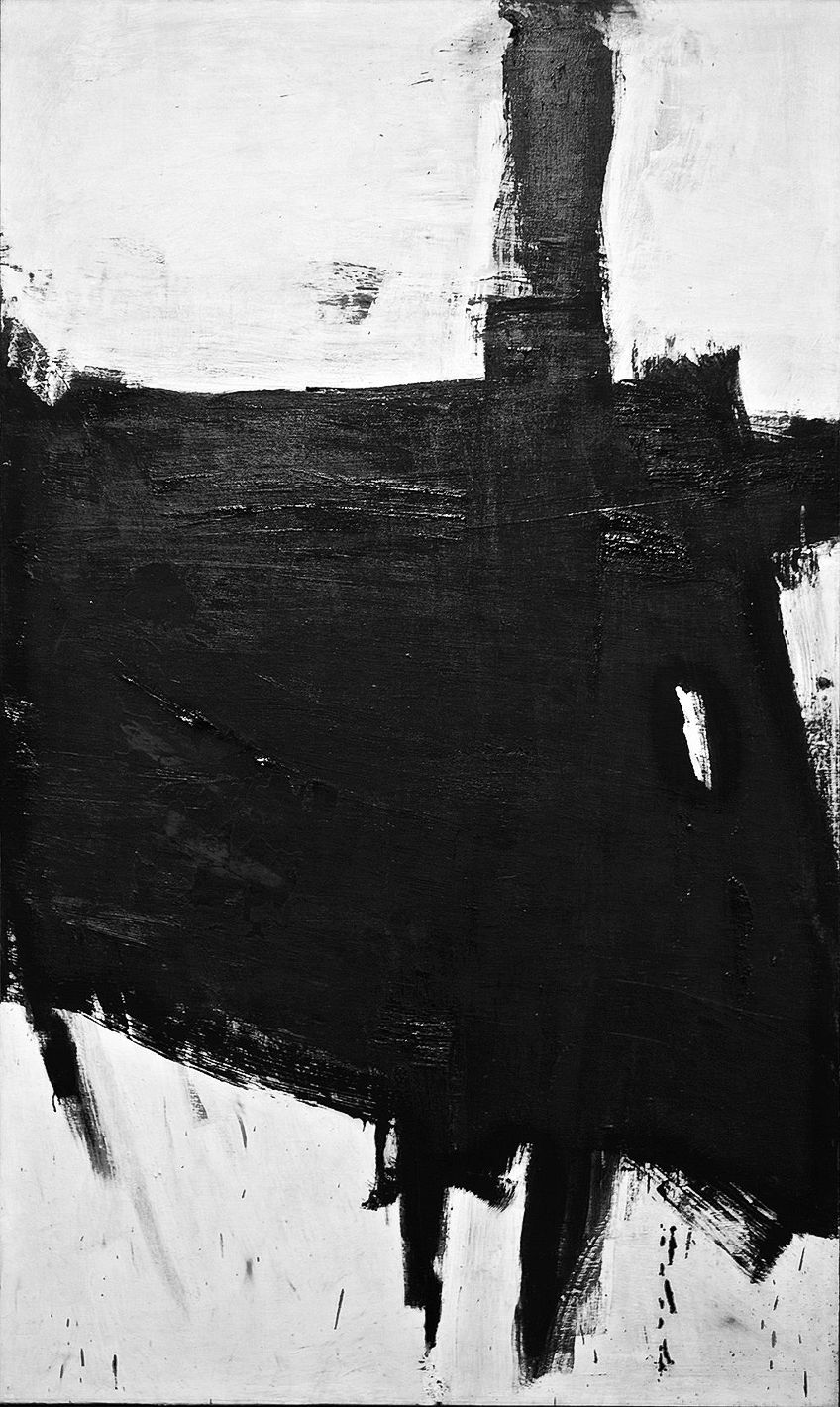
Kline was praised as an excellent action painter, as his methods embodied the technique. No matter how spirited or insistent his paintings were, Kline always thoroughly considered how they were to be completed. The inclusion of such powerful forms and symbols gave off the impression of great speed, with Kline intending his artworks to translate the experience of structure and motion to viewers. Despite his paintings being utterly indistinguishable as to their original subjects, they still exuded a great energy that linked them to their titles.
Considered to be a quintessential artist, Kline’s Abstract Expressionist paintings helped to develop gestural abstraction as a technique within the movement.
His artworks mainly existed as a way to engage with viewers, as he was reluctant to attribute any concrete meaning to them. As his career progressed, Kline reached immense levels of fame, with his uncommon approach to Abstract Expressionism going on to influence the beginning of Minimalism for many artists.
Jackson Pollock (1912-1956)
| Lifespan | 1912 – 1956 |
| Nationality | American |
| Art Movements | Abstract Expressionism |
| Most Famous Artworks | Number 1 (Lavender Mist) (1950) Autumn Rhythm: Number 30 (1950) Convergence (1952) |
When considering Abstract Expressionism, American painter Jackson Pollock is probably the most widely known, with his artworks essentially summing up the entire movement. Referred to as one of the greatest painters to emerge from America, Pollock was the personification of Abstract Expressionism during the 1940s and 1950s.
Unmatched in creativity at the time, Pollock went on to create the infamous drip painting technique that made him instantly renowned around the world.
When Pollock first emerged with his drip paintings in the late 1940s, art communities had never seen anything quite like them before. His large-scale works were produced by placing his canvases on the floor and pouring paint all over them in haphazard ways. Pollock would then impulsively brush, flick, and splatter the paint around the canvas and scatter various objects from his studio like nails, matches, and cigarette butts onto the works. These vivid pieces expressed inner emotional turmoil through gesture, line, texture, and composition.
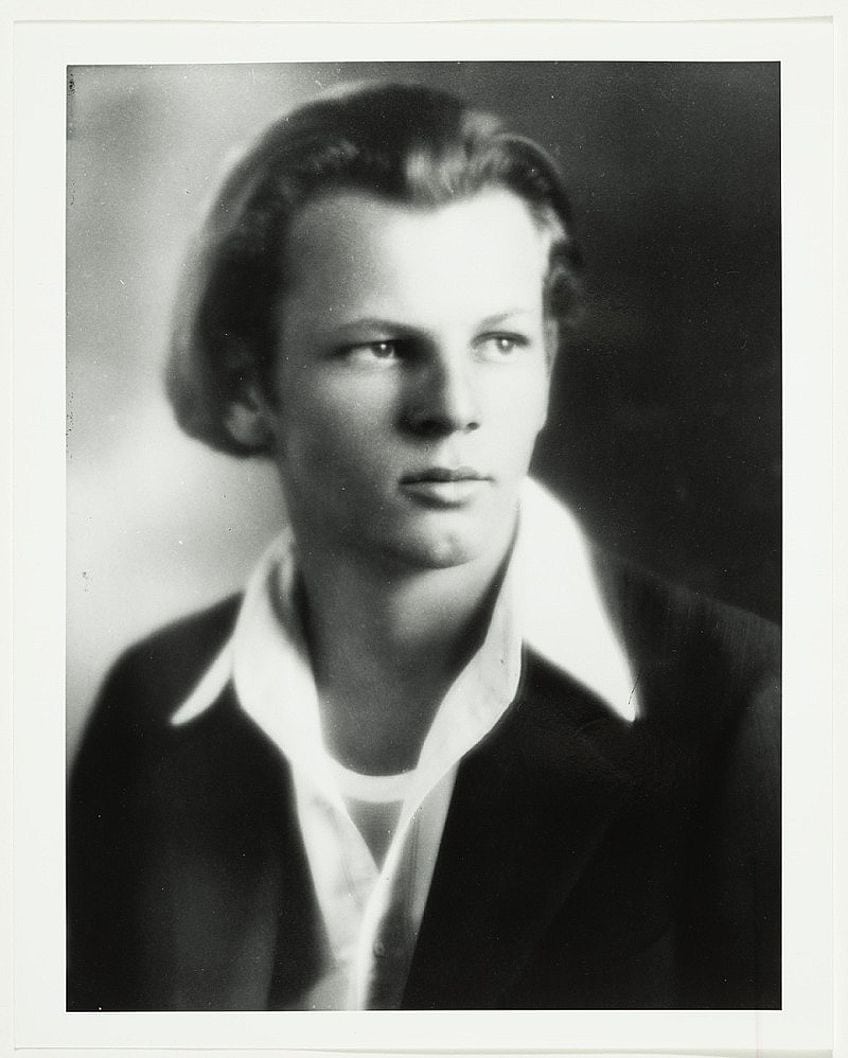
When creating his drip paintings, Pollock frequently left behind proof of a disorganized environment on his canvases. His hypnotic paintings were able to capture the vitality of life itself, as well as his own anxious mind. These paintings also evoked man’s entanglement in one’s own body, mind, and the newly modernizing and terrifying world.
Thus, Pollock’s drip painting went on to represent one of the most original bodies of work produced in the 20th century.
The combination of chance and control exhibited in Pollock’s artworks became fundamental in the development of Abstract Expressionism. Although he was not the first to use these methods, Pollock is recognized as the artist who most successfully integrated these drip techniques into his artworks. Living a very reclusive life, Pollock suffered from alcoholism, which eventually led to his untimely death at the age of 44 after a drunk driving accident. Today, his unique way of defining space still influences many generations of artists.
Elaine de Kooning (1918-1989)
| Lifespan | 1918 – 1989 |
| Nationality | American |
| Art Movements | Abstract Expressionism and New York Figurative Expressionism |
| Most Famous Artworks | Bullfight (1959) Untitled (1965) Bacchus #3 (1977) |
While she was primarily known as the wife of prominent artist Willem de Kooning, Elaine de Kooning was an important Abstract Expressionist painter in her own right. While her early career was overshadowed by her husband’s, de Kooning’s artistic scope, immense understanding of media, and impact on fellow artists were indisputable. This ultimately gained her entry into the exclusive Eight Street Club in New York, despite her being a woman.
Before fully beginning her career as an artist, de Kooning was fully immersed in the movement, as she was an editorial associate for an art company.
This led to her being one of the first people to write articles on and review the works of fellow Abstract Expressionism artists, such as Mark Rothko and Franz Kline. In addition to being an artist, de Kooning worked as an art critic and teacher, with her most prestigious position being at the National Academy of Design from 1985 onwards.
Taking to heart the thoughts and concepts of Action Painting, de Kooning painted in an incredibly gestural style. This was so that she could fully immerse herself in and identify with her subject matter, despite their abstract nature. While the majority of her paintings were heavily abstracted, they were based on the reality of the life that she lived and experienced. Despite her paintings gaining critical attention, de Kooning frequently signed her works with her initials so that viewers would not judge them based on her being a woman.
Known as a spirited and generous artist, de Kooning’s works went on to expand the realm of what was normally seen within Abstract Expressionist paintings through her delicate and dynamic portrayals. Apart from her abstract works, de Kooning also painted many portraits of friends, athletes, and even one of President John F. Kennedy.
By mixing elements of abstraction and representation in the majority of her artworks, de Kooning was deemed to be a prolific artist, critic, and teacher during the height of Abstract Expressionism.
Joan Mitchell (1925-1992)
| Lifespan | 1925 – 1992 |
| Nationality | American |
| Art Movements | Abstract Expressionism and the New York School |
| Most Famous Artworks | Untitled (1951) City Landscape (1955) Hemlock (1956) |
Another iconic female Abstract Expressionist painter was the American Joan Mitchell, who formed part of the second generation of Abstract Expressionism artists and printmakers. Inspired by the gestural artworks of Franz Kline and Willem de Kooning, Mitchell’s mature works were comprised of an extremely abstracted and richly colored technique.
By combining elements of structured composition and chaotic improvisation, Mitchell created artworks that set her apart from her male counterparts.
As part of the new wave of Expressionist artists who softened the movement and gave it a lyrical and emotional direction, Mitchell’s paintings were well-known for their compositional cadences, daring coloration, and sweeping gestural brushstrokes. Her paintings, which were often large and comprised of several panels, were inspired by nature, landscapes, and poetry. The size of her works was chosen in an attempt to convey the emotions associated with these subjects, as Mitchell’s intent was never to simply create an instantly identifiable image.
As an action painter, Mitchell’s gestural brushstrokes accurately embodied the American movement, despite her living and working for most of her life in France. Rejecting the “all-over approach” that encouraged a sense of flatness, Mitchell embraced a more traditional sense of figures and foundations in her artworks, as they were often portrayed in ways that evoked impressions of landscapes. Due to her unique works, Mitchell’s early success during the 1950s was truly striking, as other equally important female artists went unrecognized.
Mitchell’s harsh personality was thought to be a major factor in understanding her paintings, which were often read as expressions of fury and violence. Often referring to herself as the “last Abstract Expressionist”, Mitchell carried on producing abstracted paintings until her death. Throughout her career, she received tremendous critical praise and public recognition, which saw her works being exhibited alongside the great Willem de Kooning and Jackson Pollock in the monumental Ninth Street Show of 1951.
The Abstract Expressionism movement proved to be an incredibly influential era of art, as many of the greatest artists to ever exist came from this period. As the movement was so extensive, countless other iconic artists exist who also experimented with abstracted techniques and are therefore worthy of being placed on this list. If you have enjoyed learning about these various Abstract Expressionism artists, we encourage you to read up further on other painters!
Isabella studied at the University of Cape Town in South Africa and graduated with a Bachelor of Arts majoring in English Literature & Language and Psychology. Throughout her undergraduate years, she took Art History as an additional subject and absolutely loved it. Building on from her art history knowledge that began in high school, art has always been a particular area of fascination for her. From learning about artworks previously unknown to her, or sharpening her existing understanding of specific works, the ability to continue learning within this interesting sphere excites her greatly.
Her focal points of interest in art history encompass profiling specific artists and art movements, as it is these areas where she is able to really dig deep into the rich narrative of the art world. Additionally, she particularly enjoys exploring the different artistic styles of the 20th century, as well as the important impact that female artists have had on the development of art history.
Learn more about Isabella Meyer and the Art in Context Team.
Cite this Article
Isabella, Meyer, “Abstract Expressionism Artists – 12 Masters of Expressive Painting.” Art in Context. August 10, 2021. URL: https://artincontext.org/abstract-expressionism-artists/
Meyer, I. (2021, 10 August). Abstract Expressionism Artists – 12 Masters of Expressive Painting. Art in Context. https://artincontext.org/abstract-expressionism-artists/
Meyer, Isabella. “Abstract Expressionism Artists – 12 Masters of Expressive Painting.” Art in Context, August 10, 2021. https://artincontext.org/abstract-expressionism-artists/.




